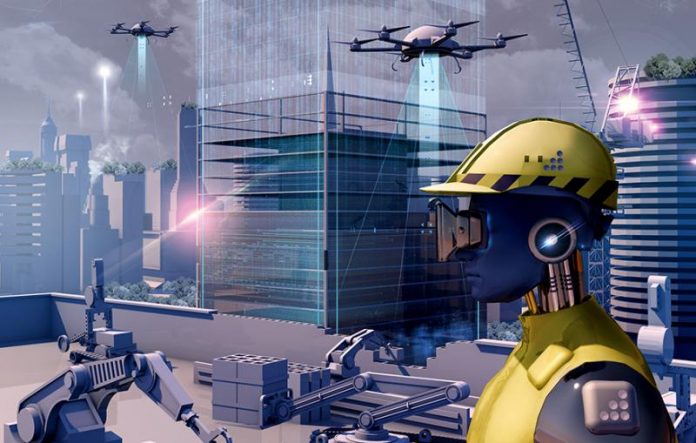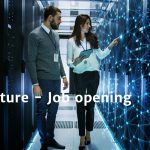While the major loss of employment is expected, AI would probably not substitute manpower. It will instead change construction business strategies, reduce expensive mistakes, minimize workplace injuries and improve building performance. Investments focused on the places where AI can most effect on their company’s unique needs should be prioritized by building leaders. In the short and long term, early movers will lead the market and reap the rewards.
In the construction industry, about 7% of the workforce in the world is working, rendering it a significant segment of the world economy. Individuals and companies expend 10 trillion dollars globally on activities related to the construction industry. Many companies utilized AI and other tools to improve their efficiency. In contrast, the construction industry has progressed at a glacial pace. Machine learning and AI in construction are substantial potential applications. In the sector, information requests, open questions, and adjustments are common. Machine learning is like an insightful friend who can study data mountains. It then notifies the project managers of what they need to be careful about. This is already the way most apps utilize AI. It has the advantages of universal spam filtering and advanced security surveillance.
AI vs Mankind
Labor shortages and an attempt to improve low productivity in the sector are pushing construction businesses to invest in AI and data science. Building companies are starting to use AI and machinery technology to better plan their research and machinery delivery through workers. A robot that proceeds to evaluate job progress and the position of staff and equipment helps project managers to immediately tell which workplaces have enough employees and equipment to complete the project on time and which may be behind where more research can be mobilized. Researchers predict that creating robotics with AI technologies will be more sophisticated and autonomous.
For More Detail Insights, Download Sample Copy of the Report at: https://www.researchdive.com/download-sample/46
Implementing innovative skills
It can be challenging for companies to embrace the latest technology. Yet innovation and artificial intelligence help to improve the quality of workers and save capital. In the construction industry, AI technologies that have had an influence on other industries begin to emerge. The 3D models will take into account the structural, technical, mechanical, electrical, and plumbing (MEP) configuration and sequence of operations of the respective teams in order to prepare and design the development of a structure. The stumbling block is not to overlap between the different models of the sub-teams. In the type of generative modeling, the industry aims to use machine learning to recognize and minimize collisions between the different models created by the different teams during the planning and design process.
Hi-tech advances
In 2018, AI Startup was introduced to guarantee that it’s robotics and artificial intelligence are the key to solving tasks for late and budgetary development. The company uses robotics to independently capture 3D images of building sites and then feeds certain estimates into a deep neural network that decides the magnitude of different sub-projects. The management team can work on small problems if things seem out of the way before they become major questions. The future algorithms will use a ‘reinforcement learning’ AI strategy, which facilitates trial-based and error-based testing of algorithms.
Conclusion
Five times as many construction workers as other workers are killed on the job. Falls, colliding with objects, an electrocution, trapped in fire accidents, caught under debris falls explosions and gas leaks interspersed causes of death of the private sector, except ground accidents in the construction industry. A $3 trillion annual sales contractor based in Boston develops a photo algorithm which analyzes images from its workplaces, scans them for security hazards such as employees who do not wear protective gear, and compares the photos with incident reports. The organization reports that it can probably measure project danger scores so that protection alerts can be kept when an elevated hazard is identified.
Mr. Abhishek Paliwal
Research Dive
30 Wall St. 8th Floor, New York
NY 10005 (P)
+ 91 (788) 802-9103 (India)
+1 (917) 444-1262 (US) Toll
Free : +1 -888-961-4454
Email: support@researchdive.com
LinkedIn: https://www.linkedin.com/company/research-dive
Twitter: https://twitter.com/ResearchDive
Facebook: https://www.facebook.com/Research-Dive
Blog: https://www.researchdive.com/blog
Follow us on: https://covid-19-market-insights.blogspot.com
About Us:
Research Dive is a market research firm based in Pune, India. Maintaining the integrity and authenticity of the services, the firm provides the services that are solely based on its exclusive data model, compelled by the 360-degree research methodology, which guarantees comprehensive and accurate analysis. With unprecedented access to several paid data resources, team of expert researchers, and strict work ethic, the firm offers insights that are extremely precise and reliable. Scrutinizing relevant news releases, government publications, decades of trade data, and technical & white papers, Research dive deliver the required services to its clients well within the required timeframe. Its expertise is focused on examining niche markets, targeting its major driving factors, and spotting threatening hindrances. Complementarily, it also has a seamless collaboration with the major industry aficionado that further offers its research an edge.
This release was published on openPR.













